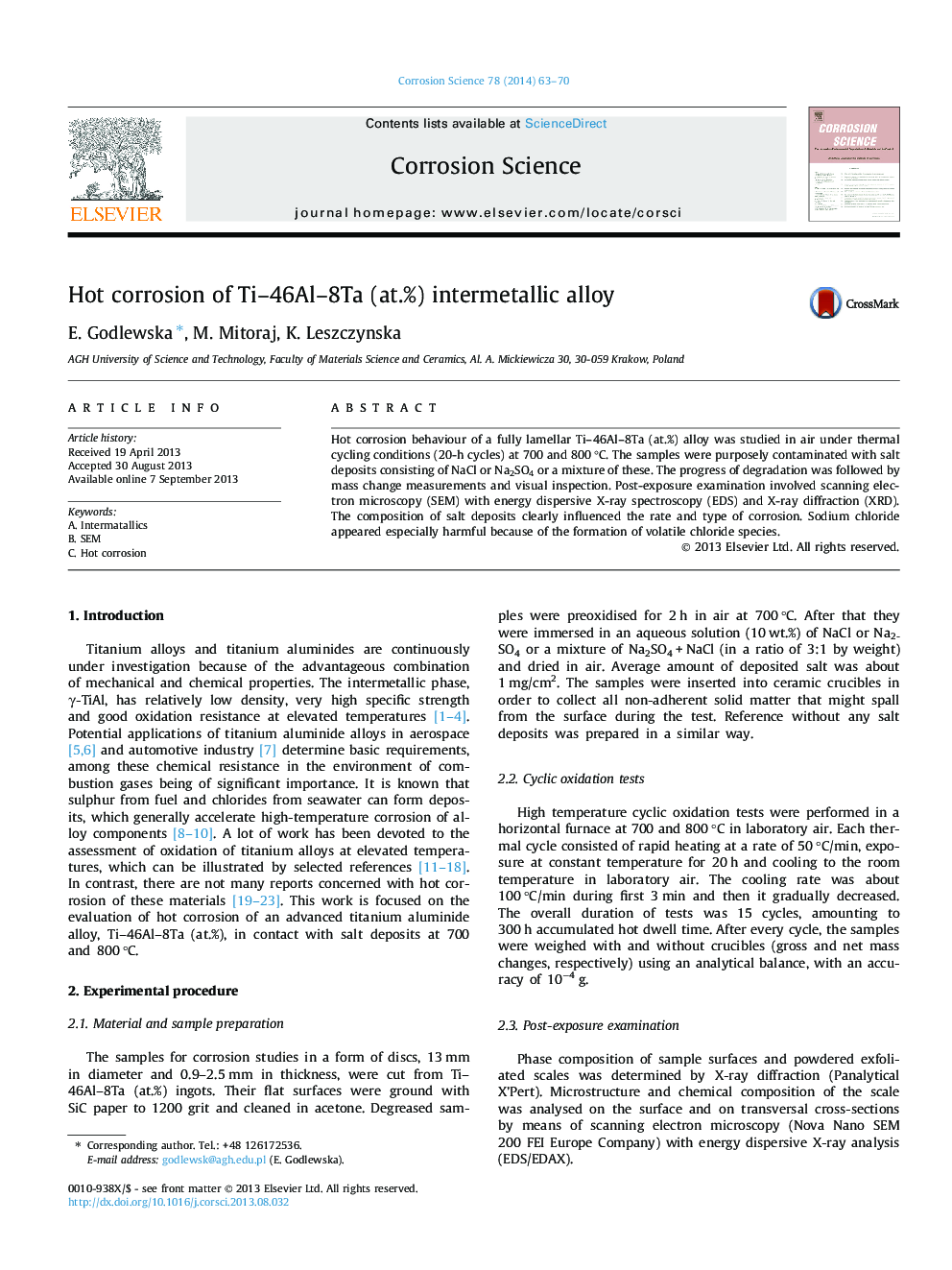| Article ID | Journal | Published Year | Pages | File Type |
|---|---|---|---|---|
| 1469019 | Corrosion Science | 2014 | 8 Pages |
•Cyclic oxidation tests with salt deposits were conducted on Ti–46Al–8Ta (at.%) alloy.•Mineral contaminants had detrimental effect on oxidation resistance.•Sodium chloride appeared to be the most hazardous among salts used.•Significant material losses were attributed to self-sustaining reaction mechanism.
Hot corrosion behaviour of a fully lamellar Ti–46Al–8Ta (at.%) alloy was studied in air under thermal cycling conditions (20-h cycles) at 700 and 800 °C. The samples were purposely contaminated with salt deposits consisting of NaCl or Na2SO4 or a mixture of these. The progress of degradation was followed by mass change measurements and visual inspection. Post-exposure examination involved scanning electron microscopy (SEM) with energy dispersive X-ray spectroscopy (EDS) and X-ray diffraction (XRD). The composition of salt deposits clearly influenced the rate and type of corrosion. Sodium chloride appeared especially harmful because of the formation of volatile chloride species.
